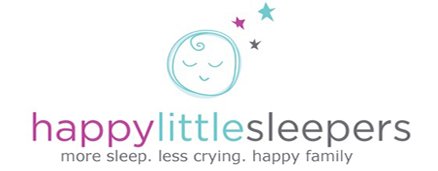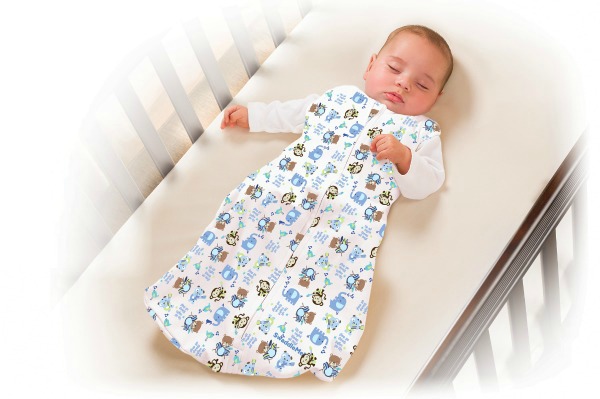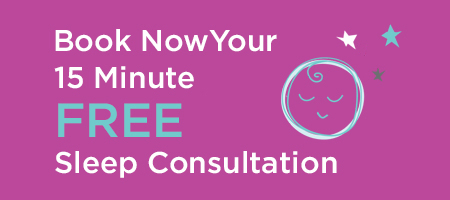What is a safe sleep environment for my child?
Everyday I hear from parents who are confused and unsure about the latest recommendations Safe Sleeping Guidelines. As parents we are inundated with well meaning advice from friends and family leaving us agonizing over where and how our children should sleep. Read through the following information, brush aside the critics and make an informed choice that is right for you!
Sudden Infant Death Syndrome (SIDS) is the #1 cause of death for healthy infants under the age of 1 in Canada. The great news is that since the launch of the 1999 Back to Sleep Campaign in Canada, more parents have been putting their babies to sleep on their back and the rate of SIDS has dropped by more than half.
There are many factors that influence the environment our children sleep in, parental values, cultural diversity and socioeconomic factors or plain convenience. A recent study by the London School of Hygiene & Tropical Medicine states that bed sharing leads to fivefold increase in risk of cot death/SIDS for young babies.
Follow these Safe Sleeping Guidelines by creating a safe sleep space for your baby lowering the risks of SIDS.
- Keep your baby in a smoke free environment.
- Any amount of breastfeeding can protect your baby from SIDS. Exclusive breastfeeding for 6 months can lower the risk by up to 50%.
- Always put your baby to sleep on their back.
- Your baby should sleep on their own sleep surface like an approved crib or bassinet.
- Your baby should be alone in their bed on a firm mattress. Avoid using bumpers, quilts, blankets and pillows.
- Health Canada only recommends cribs made after 1986 and/or no more than 10 years old.
- Overheating is a risk for SIDS. Put your baby to sleep in a fitted one piece sleepwear or an armless sleeping bag that is designed for the weight and length of your child. If the room temperature is comfortable for you it is comfortable for your baby.
- Room share for the first 6 months. Put your baby to sleep in a crib or bassinet next to your bed, in your room.
Even with these safe sleeping guidelines in place co sleeping is still very common in our society and we do it for many reasons, to monitor our child, to facilitate breastfeeding, to nurture a secure attachment and sometimes out of sheer desperation for more sleep.
I support and encourage the families I work with to follow the American Association of Pediatrics and the Canadian Pediatrics Society’s recommendations on safe sleep: For the first 6 months, the safest way for your baby to sleep is alone, on his back, in an approved crib or bassinet in your room.
However, statistics show that bed sharing is becoming increasingly more common and I believe that we all have the right to make decisions that feel right for our own family.
If you make the decision to co sleep with your baby read through these safe sleeping guidelines so that you can bed share with confidence.
- Both parents must be aware that the baby is in the bed and take equal responsibility for the safety of the child.
- Infants should sleep on a firm, king size mattress ideally placed on the floor with a securely fitted sheet only.
- Check every day that there is no area where your baby can become wedged.
- Do not sleep with your baby if you have consumed alcohol, taken drugs or are excessively sleep deprived.
- Over weight parents pose a proven risk to co sleeping infants.
- Do not use pillows, blankets or duvets while co sleeping.
- Dress yourself and the baby appropriately considering you will not be using covers. Ensure that your baby cannot overheat.
- Tie long hair back.
- Do not let pets sleep with you and your baby.
- Co sleeping should only be considered by breast feeding parents.
- Never leave your baby alone in an adult bed and ensure there are NO suffocation or entrapment hazards.
- Consider your room sharing options by placing your baby on an approved, separate sleep surface for the first 6 months.
You can also check out the La Leche League Canada’s website which includes Resources for Making Safe Sleeping Decisions
Many families start the night with their baby in the crib but after a hazy late night feed mother and baby unintentionally fall asleep together in the bed. Prepare your sleep space at the start of the night just in case! Do not rely on having the energy or conviction to prepare your bed at 3am.
No matter what choice you make for your family make it an educated one that is right for you and your child.







